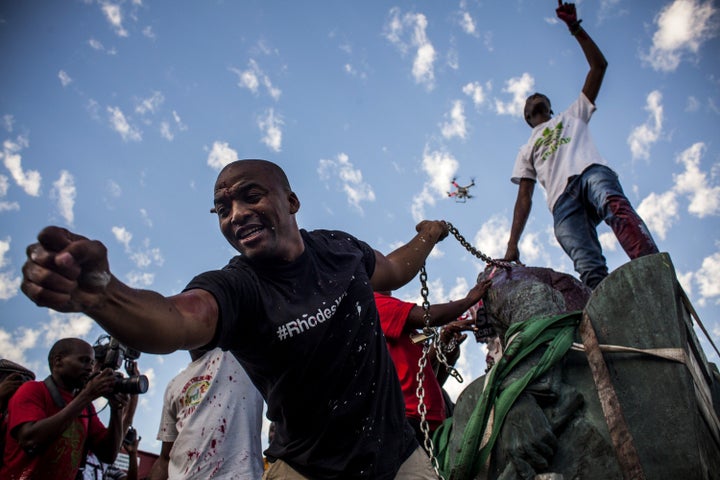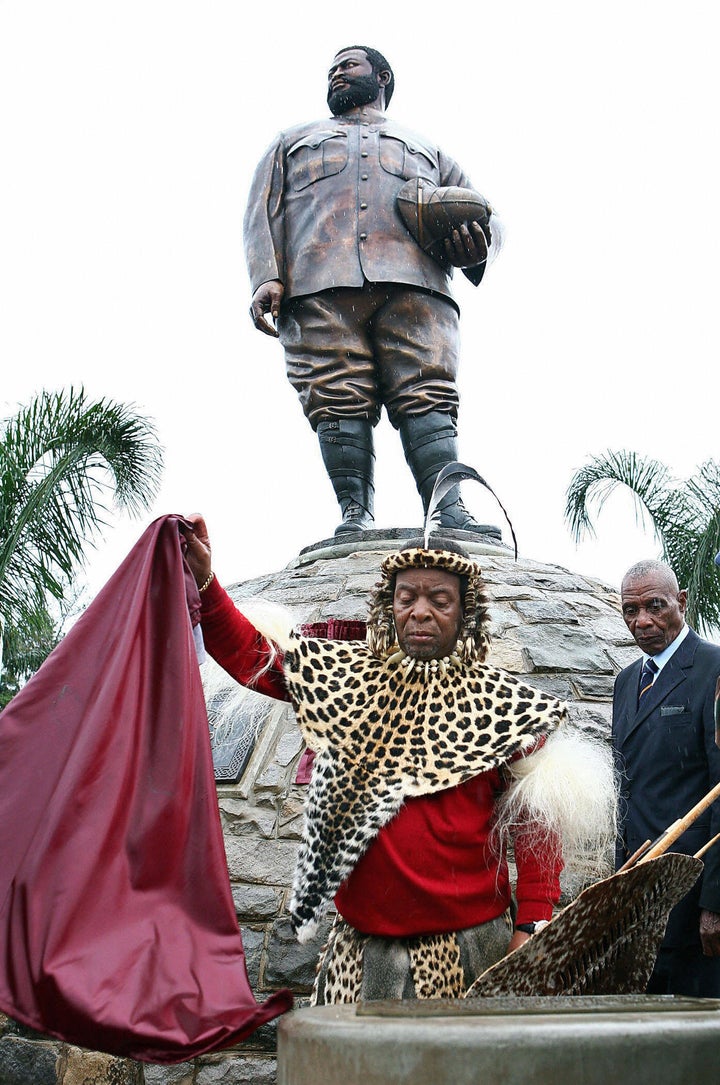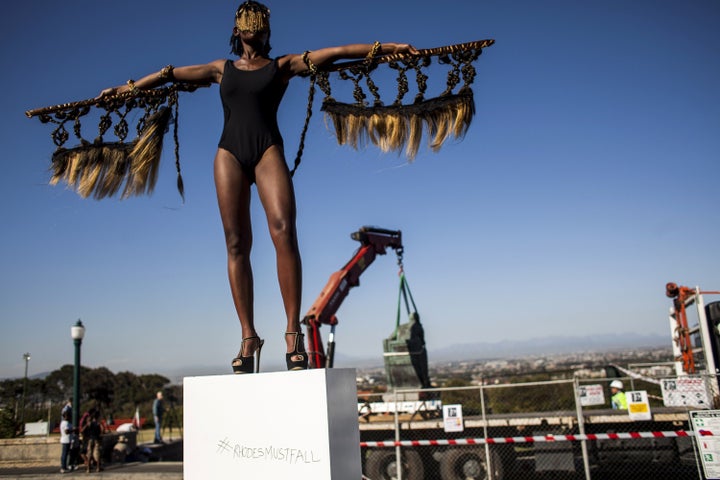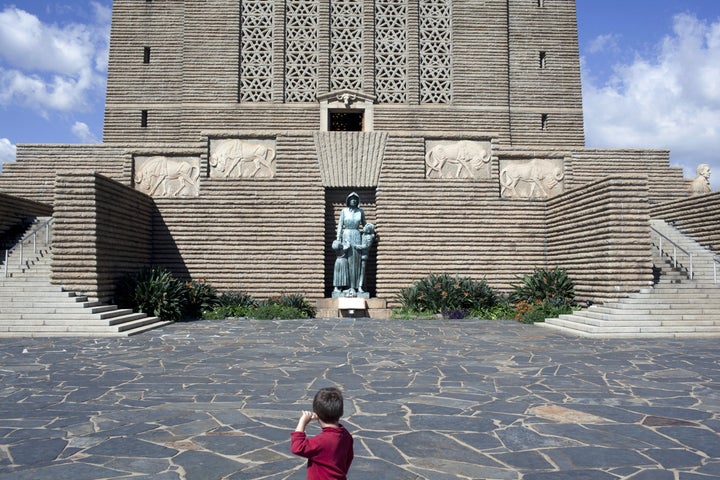
DURBAN, South Africa — When I moved to South Africa in 1995, the newly democratic nation was grappling with the “monument issue” — a public and academic debate around colonial and apartheid-era statues and monuments and “white minority heritage” more generally, which the black majority perceived as offensive. The country was at a momentous juncture in its history and an exciting spirit of a new beginning pervaded every aspect of life.
I used to live in South Carolina, and recent events in the U.S. brought back memories of that time. There are similarities between the local landscapes of memory in both places, and parallels in the potential interpretation of monuments as symbols of white supremacy and racial oppression in the context of a racially mixed and often divided society. I don’t recall ever seeing a statue defaced or a monument removed during my six years in South Carolina, but the situation in South Africa was, of course, very different at the time.
Here in Durban, on the Indian Ocean coast, two statues face each other in a grassy park near the city center. It wasn’t always this way — one was there before the other. The first is an imposing monument to Louis Botha, who lived from 1862 to 1919 and is remembered as a hero of the Second Boer War and the first prime minister of the Union of South Africa. The other, a statue of the Zulu King Dinuzulu (1868-1913), was erected in 2005 after a lengthy and spirited debate about the relevance of the Botha statue and the reorganization of the park. Being confronted with ever increasing European encroachment and the gradual destruction of the Zulu kingdom, Dinuzulu was eventually imprisoned for his role in the 1906 Bambatha Rebellion. But Botha ordered his release when he became prime minister because he believed Dinuzulu did not have a fair trial. This noble gesture of restoring justice and dignity underpins the symbolism of the two statues and is meant to render them historical models of reconciliation that can provide moral guidance in a post-apartheid society.

Except, hardly anyone knows such details of history. For the majority of South Africans, Botha remains first and foremost a white oppressor. Then and now, radical iconoclasts in South Africa believe that colonial statues and “white monuments” should have been removed immediately at the end of apartheid, pointing to the example of post-Nazi Germany, post-communist societies and postcolonial nations all over the world. However, it is important to remember that the post-apartheid order did not emerge from revolution or military victory — it was a negotiated transition of power. Leaving statues, monuments and other identity symbols of the white minority largely untouched was one of the many compromises struck during the Nelson Mandela era, ostensibly in the name of reconciliation and nation-building, but also perhaps to gain symbolic capital in the eyes of the international community and much-needed foreign investors.
The 1999 National Heritage Resources Act formally protects all monuments, but provides for the potential removal of contested symbols on a case-by-case basis after careful consideration of their significance and consultation with relevant stakeholders. In practice, this approach has resulted in few changes to the national landscape of memory. Sometimes, the government chooses to position new monuments near established ones, as was the case with Botha and Dinuzulu in Durban, thereby re-contextualizing contested history. Indeed, the Dinuzulu statue closely matches the Botha effigy in style, height and general stature. There are examples of this approach throughout the country. It appeals to international visitors, tourists and educated locals who understand the identity and historical context of both monuments and appreciate the symbolic significance of the juxtaposition.

All was mostly quiet on the monument front in South Africa for many years. That changed suddenly in March 2015 at the University of Cape Town when the bronze statue of Cecil John Rhodes, a British businessman and imperialist who became the prime minister of Cape Colony in 1890, was besmirched with human excrement. In what became known as the #RhodesMustFall campaign, protesting students demanded the immediate removal of the statue and pushed to “decolonize the curriculum.” Fueled by social media, the incident reverberated across university campuses nationwide and even prompted solidarity responses overseas, notably in the United Kingdom and the United States. In fact, South African students would surely be proud if their initiative contributed to the recent flare-up of the statue debate in the American South.
The #RhodesMustFall campaign sparked a wave of statue defacements throughout South Africa (the Botha statues in Durban and Cape Town included) and gave fresh impetus to the national debate about colonial and apartheid-era monuments. For people like me, who have been around long enough, the debate was an exact rerun of what happened nearly two decades earlier, but the vandalism and public displays of outrage were new elements.
At first sight, the battle lines in South Africa’s fight over monuments are drawn along racial lines. Those advocating a radical removal of all symbols of white domination emanate almost exclusively from the African majority, while conservatives who defend monuments as an inalienable part of history predominantly belong to the white minority. In between the extremities are moderates from all racial groups, some of whom suggest that colonial monuments should be retained for educational reasons, to remind us where we have come from, while others recommend relocation to museums, re-contextualization or redesign.

But the disagreement is not always aligned with racial affiliation. On many occasions, I have found black South Africans defending colonial monuments in private conversation, but they are not likely to broadcast their opinion for fear of marginalization and reprisals, especially in spaces like university campuses where the monument issue has become highly politicized. Understandably, extreme positions on either end of the spectrum dominate the debate and enjoy much media coverage. What remains largely concealed, and what I find most striking, is how many people appear to have no opinion about monuments – old or new ― at all.
Over the years, I frequently found this in conversations with people around monument spaces and even, surprisingly, in discussions with cohorts of young black students in the Cultural and Heritage Tourism program at my university. Ultimately, it must be remembered that local African societies have no tradition of preserving symbolic artifacts as reminders of the past or erecting bronze effigies of leaders in their environment. For the majority, exposure to the “heritage discourse” strongly promoted by the post-apartheid government is still a fairly new phenomenon.
After a rushed debate, the Rhodes statue at UCT was removed in April 2015, a quick and symbolic measure of appeasement, but the students’ demands for a fuller transformation will be far more slow and difficult to attain. The most influential and lasting aspect of the #RhodesMustFall campaign was arguably that the “must fall” part of the hashtag became a ubiquitous part of the nation’s colloquial vocabulary, quickly mutating into #FeesMustFall and subsequently any imaginable cause, from sports to cooking. Currently trending is #ZumaMustFall.
As media attention and public debate moved on to more topical matters, most defaced statues were quietly cleaned up or repaired; very few have been removed or relocated. However, the government is currently reviewing the heritage legislation and we might see more changes in the future.

